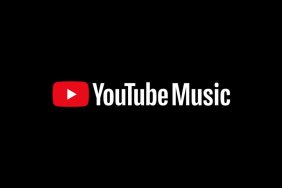Today the Disney-owned digital media company Maker Studios revealed that it would be dropping Felix “PewDiePie” Kjellberg, YouTube’s most subscribed star, from its company. A statement from Maker said that he “clearly went too far” with his recent videos, adding: “Maker Studios has made the decision to end our affiliation with him going forward.” YouTube has also revealed that it will be cancelling the second season of his reality show Scare PewDiePie, and will be pulling his channel from its premium advertising program.
For a while now, YouTubers have been shifting towards an over-reliance upon “YouTube drama” in order to generate views, as their audiences become more interested in the celebrities of the video-sharing platform rather than their content. This type of content has been popularized by video makers such as Keemstar, who hosts the show “Drama Alert,” and Scarce, who posts daily videos detailing the controversies video makers across the site have become embroiled in.
Also: Tana Mongeau and iDubbbz’s YouTube Feud Over “The N Word”
YouTube drama is a relatively easy way to roll in the views, as creating controversy around a particular topic can keep audiences invested over a sustained period of time. This isn’t exactly dissimilar from tactics employed by the media, with concentrated coverage on a high-profile topic able to provide a publication or news network with stories that can last for as long as their audience’s interest permits. However, whereas said companies will employ editors, legal departments and other assorted staff to ensure that the content they provide doesn’t overstep legal or moral boundaries, a YouTube channel is typically run by one or a very small group of people, meaning that the limitations of their content are only established by themselves.

Maker Studios has also ended its affiliation with PewDiePie’s Revelmode network.
The unfiltered nature of YouTube is a large reason why it’s steadily becoming more popular than traditional television, but it’s also why the site struggles with staying on the right side of the advertisers that drive in its revenue. The announcement of more advertiser-friendly guidelines for content creators rubbed many up the wrong way, with PewDiePie notably releasing a video that saw him claiming the company “doesn’t care about its creators.” While many justifiably bemoaned YouTube’s vague descriptions of what is and is not viewed as ad-friendly content, PewDiePie’s own descent into the YouTube drama wormhole is a good example of why the site and its parent company Google is growing increasingly wary of encouraging creative freedom among its users.
With 53 million subscribers PewDiePie is the face of YouTube, but the very nature of the site means that it does not get to have any creative input in regards to his content. The most that the company can do to encourage its users to create videos that are more appealing to advertisers is threatening their content with demonetization, but due to YouTube’s notorious inability to successfully communicate with its users, this only leads to complaints and dissent among its content creators rather than the intended result of them falling in line.
Which brings us to PewDiePie. Though he will likely be just fine without the additional support of Maker Studios and YouTube’s premium advertising program, YouTube’s decision to wipe their hands of him as much as possible without shutting down his channel is a major move, and one that outlines a problem that the site has created for itself. As previously outlined in a video by The Game Theorists, YouTube strongly promotes lengthier videos from channels that publish regularly, regardless of what that content may be. This is exemplified with a YouTube search for ‘Hunger Games,’ with the site showing results for Minecraft Let’s Plays sharing the film series’ title rather than trailers for the film itself.

Revelmode includes 12 prominent YouTubers, who have a combined subscriber count of over 100 million.
However, YouTube’s conclusion that companies are more keen to advertise on lengthier videos from more consistent channels doesn’t encourage the creation of high-quality content, but rather encourages YouTubers to plump for low-effort content that will attract tons of views regardless. This has led to the rise of “YouTube drama,” which is practically a sub-category on the site considering its popularity among video makers and viewers alike. Though PewDiePie previously condemned the practice of stirring the pot for views in a now-deleted video, his channel has since become one of the most frequent sources of controversy on YouTube, with his popularity leading to widespread coverage across various media outlets and an increase in his views as a result.
But the key issue faced by shock jocks is finding new ways to appeal to an audience that is growing increasingly desensitized to their behavior, leading to him distinctly overstepping the ad-friendly line with a video in which he paid two men to hold up a sign reading “Death To All Jews” on the freelance marketplace Fiverr. Though his intentions behind the video were clearly the result of him looking to shock his audience rather than genuine anti-Semitism, advertisers would inevitably not take too kindly to having their products associated with such content. While YouTube pulling PewDiePie from the premium advertising program helps to quell the immediate issue of their most popular creator peddling anti-Semitic jokes, it does not tackle the more pressing matter that the site’s algorithms are tacitly encouraging such controversial behavior.
In an ideal world for YouTube its content creators would be pushing out frequent videos that fall in line with advertisers’ expectations. They would be able to generate hundreds of thousands of views without pushing any boundaries, and they could become talking points without veering into offense. However, the reality is that YouTubers are desperately grasping for views any way they can while operating within the site’s loosely defined guidelines, as the site continues to unwittingly encourage its creators to produce content that is the exact opposite of what brands want to see.








